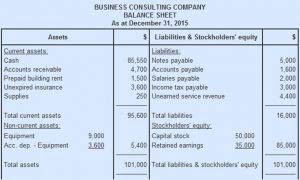
Imagine a company has earnings before interest, taxes, depreciation, and amortization (EBITDA) of $1,000,000 in a given year. This company has had no changes in working capital (equal to current assets minus current liabilities). The expense of the new equipment will be spread out over time via depreciation on the income statement, which evens out the impact on earnings.

Accounts Payable
Looking at FCF is also helpful for potential shareholders or lenders who want to evaluate how likely it is that the company will be able to pay its expected dividends or interest. If the company’s debt payments are deducted from free cash flow to the firm (FCFF), a lender would have a better idea of the quality of cash flows available for paying additional debt. Shareholders can use FCF minus interest payments to predict the stability of future dividend payments. It also includes spending on equipment and assets, as well as changes in working capital from the balance sheet. Excel reigns supreme as the go-to tool for finance professionals when it comes to performing a DCF analysis, and there are solid reasons for its popularity. Its sophisticated formulae and functions, like NPV (Net Present Value) and IRR (Internal Rate of Return), provide the precision and flexibility I need for complex calculations.
- That’s why it’s critical to measure FCF over multiple periods and against the backdrop of a company’s industry.
- Ensuring a steady cash inflow and controlling outflows is key to sustaining healthy cash flow.
- On the other hand, if a company has substantial FCF to maintain its current operations, but not enough FCF to invest in growing its business, that company might eventually lag behind its competitors.
- It provides insights into the company’s ability to generate cash from its day-to-day operations.
- Free Cash Flow is a key indicator of a company’s financial flexibility and strength.
- Sometimes, a blended discount rate might be required, considering different scenarios such as changing interest rates or specific project risks, to better tailor the DCF to reflect possible futures.
How to Calculate Free Cash Flow (FCF)
Value investors often look for companies with high or improving cash flows but with undervalued share prices. In this example, there is a strong divergence between the company’s revenue and earnings figures and its free cash flow. Based on these trends, an investor might suspect that Company XYZ is experiencing some kind of financial trouble that hasn’t yet impacted headline numbers such as revenue and earnings per share. One major drawback is that purchases that depreciate over time will be subtracted from FCF the year they are Airbnb Accounting and Bookkeeping purchased, rather than across multiple years.

Balance

Accurately estimating future cash flows is like trying to hit a moving target, but it’s a crucial part of the DCF process. It’s relatively straightforward to project cash flows for the immediate future, like year 1. However, the difficulty surges as I look to predict years 2, 3, 4, and beyond—when predictions can verge on educated guesswork, especially in volatile industries. It’s essential for me to draw upon historical data, understand industry trends, and consider economic forecasts to improve the accuracy of these projections. This is the most commonly applied method of calculating FCF because it is both simple and the information is almost always available in the financial statements. In summary, comparing FCF across companies and industries requires a holistic approach.

One benefit of using FCF to analyze financial health is that it reveals the stability of the business as a going concern. This helps investors to assign risk to a business as FCF becomes more stable and a business matures. For example, high free cash flow is typically an indicator that the business is running efficiently and is financially stable. Exclude one-time gains or losses (e.g., sale of an asset, legal settlements) from FCF calculations.
- Free cash flow is often evaluated on a per-share basis to evaluate the effect of dilution.
- Remember that FCF is a powerful tool, but its interpretation requires a holistic understanding of these limitations.
- Changes in working capital, the difference between current assets and liabilities, provide insight into a company’s short-term financial health.
- A change in free cash flow in a firm often provides a substantial idea about a firm’s performance.
- Now, subtracting NOPATs and the net investment in operating capital gives us the FCF.
- This is because it is a practical form of analysis that can be helpful for many stakeholders.
So now that you know why free cash flow is an important metric, it’s calculation time. While FCF is an indicator of profitability and the health of your business, it’s important to remember that it shouldn’t be looked at on its own. Also worth noting that sometimes your business might be in negative cash flow for various reasons, the article will explore shortly. This cash can be reinvested into different projects and acquisitions and can be extremely useful during challenging times. This helps businesses gain financial stability and sustainability in the long run.
Unlocking the Mysteries of DCF in Excel
For yield-oriented investors, FCF is also important for understanding the sustainability of a company’s dividend payments, as well as the likelihood of a company what is cash flow raising its dividends in the future. Free cash flow is an important financial metric because it represents the actual amount of cash at a company’s disposal. A company with consistently low or negative FCF might be forced into costly rounds of fundraising in an effort to remain solvent. Alternatively, perhaps a company’s suppliers are not willing to extend credit as generously and now require faster payment. The discount rate reflects the risk and opportunity cost of an investment, with WACC (Weighted Average Cost of Capital) being the most common choice. WACC blends the cost of equity and debt to provide an accurate measure of required returns.
How to Calculate Free Cash Flow?
FCF, on the other hand, represents the actual cash generated by the business that is available for distribution to investors after all expenses and reinvestments. FCFF is calculated before accounting for interest and principal repayments, offering a comprehensive picture of a company’s cash-generating capability. It is particularly useful when assessing operational efficiency or during mergers and acquisitions, where understanding the total cash flow potential is critical. By including interest and tax considerations, FCFF aligns with the perspectives of both equity and debt investors.
- If stock prices are a function of the underlying fundamentals, then a positive FCF trend should be correlated with positive stock price trends overall.
- Finally, subtract the required investments in operating capital, also known as the net investment in operating capital, which is derived from the balance sheet.
- As we’ve seen in the different variations, FCF is very much influenced by operational costs.
- It serves as a measure of the cash a firm generates or is left with once the amount of required working capital and capital expenditure is accounted for.
- We provide advanced cash forecasting capabilities that leverage machine learning and predictive analytics.
- As an investor, understanding FCF empowers you to make informed decisions and navigate the complex world of finance with confidence.
- Remember, while FCF is essential, it’s crucial to consider it alongside other financial indicators and qualitative factors when evaluating investment opportunities.
For example, the Discounted Cash Flow (DCF) model, one of the most common valuation methods, relies on FCF to estimate a company’s intrinsic value. If you’re unsure about calculations, using a cash flow calculator can simplify the process and ensure accuracy. The guide presents seven key cash flow formulas accompanied by explanations and examples. Wise also offers easy financial management services, allowing you to pay invoices, balance sheet employees and manage subscriptions fast, in one click. See balances in different currencies, pay suppliers quickly, and take greater control over income – all in one place. If your business sells products or services in other regions such as Europe and Asia, any e-commerce revenue and brick and mortar sales, all of that activity will go under sales revenue.
